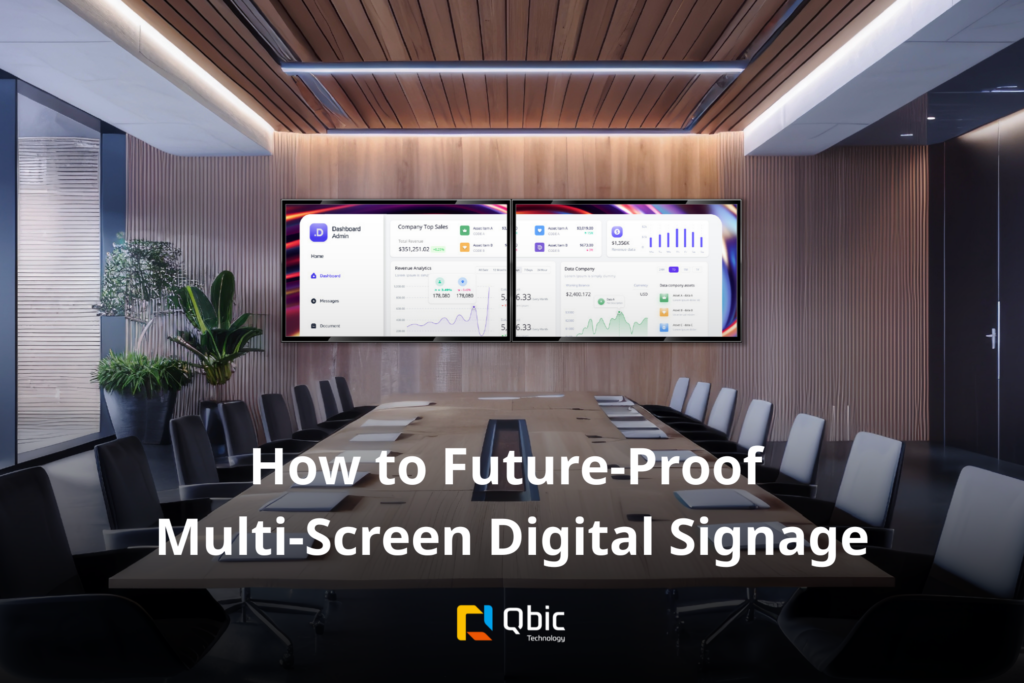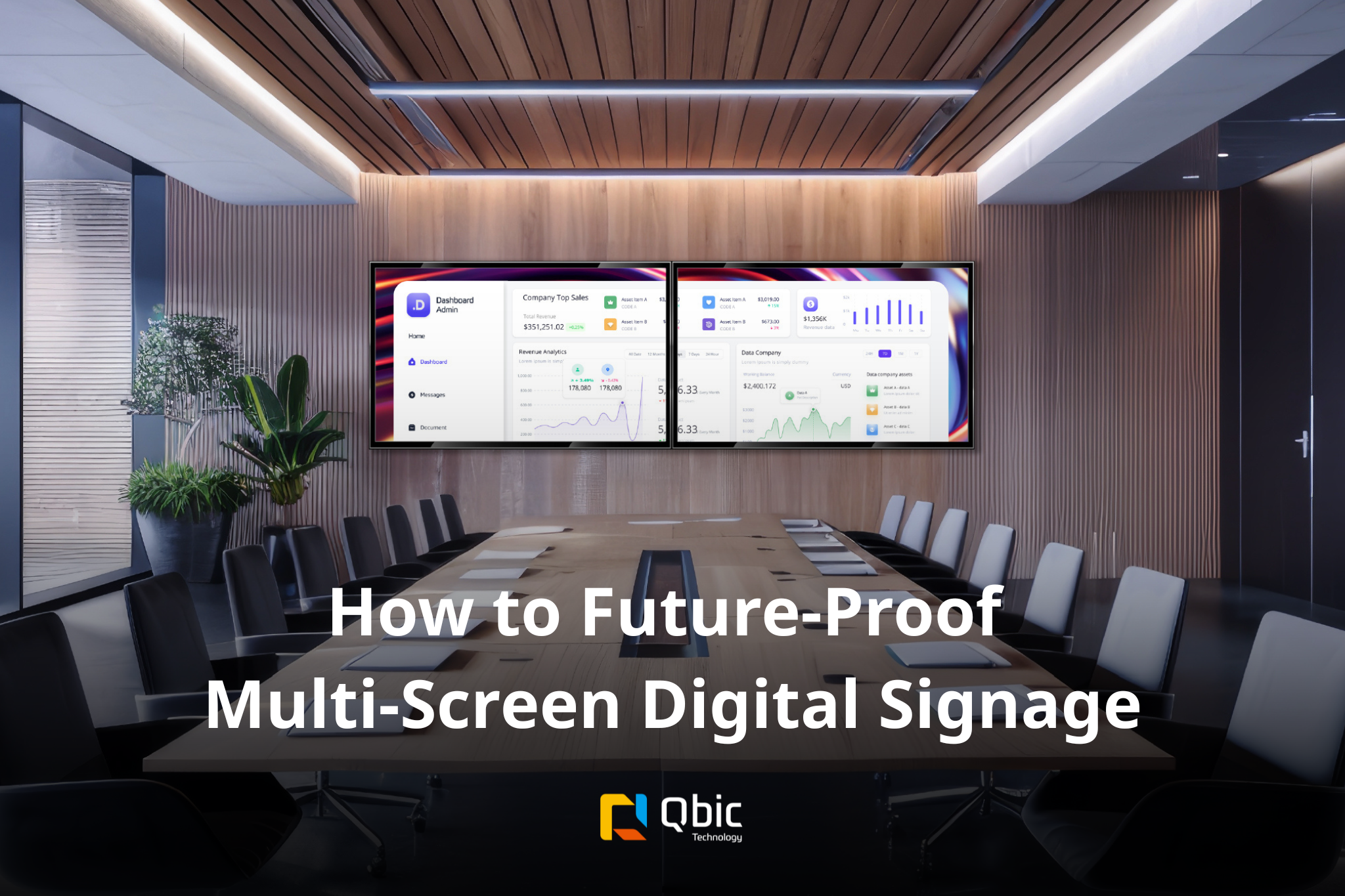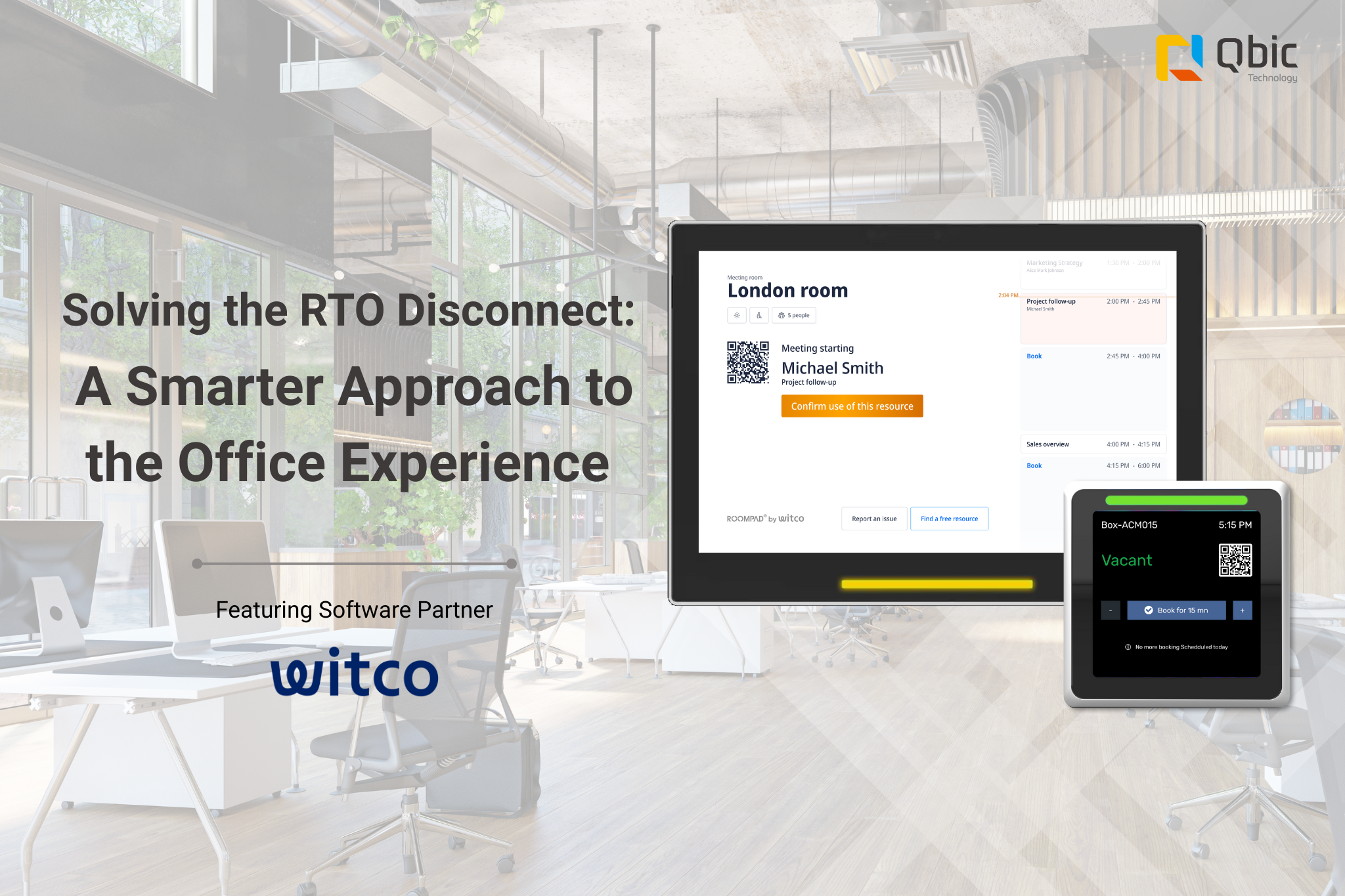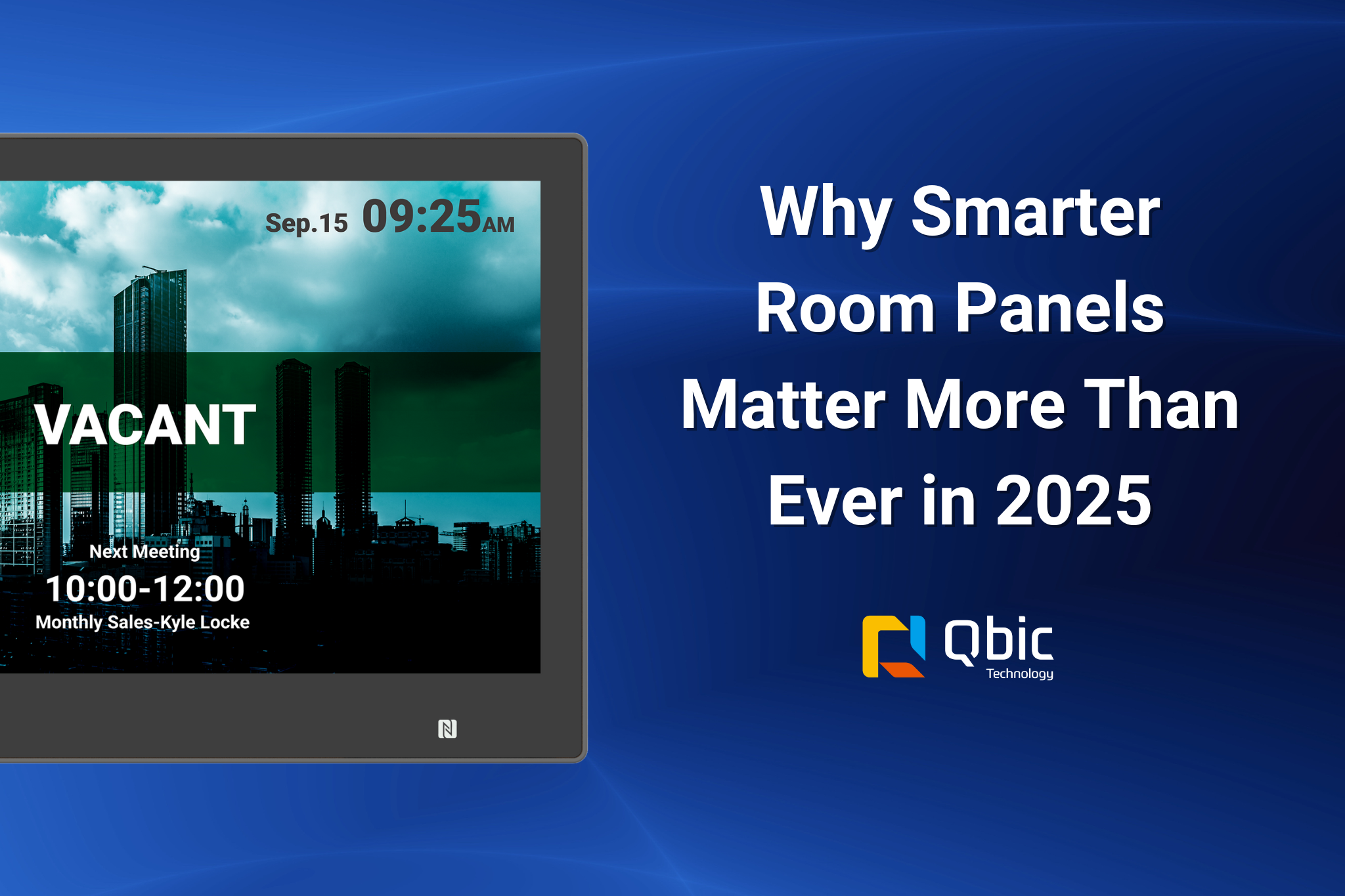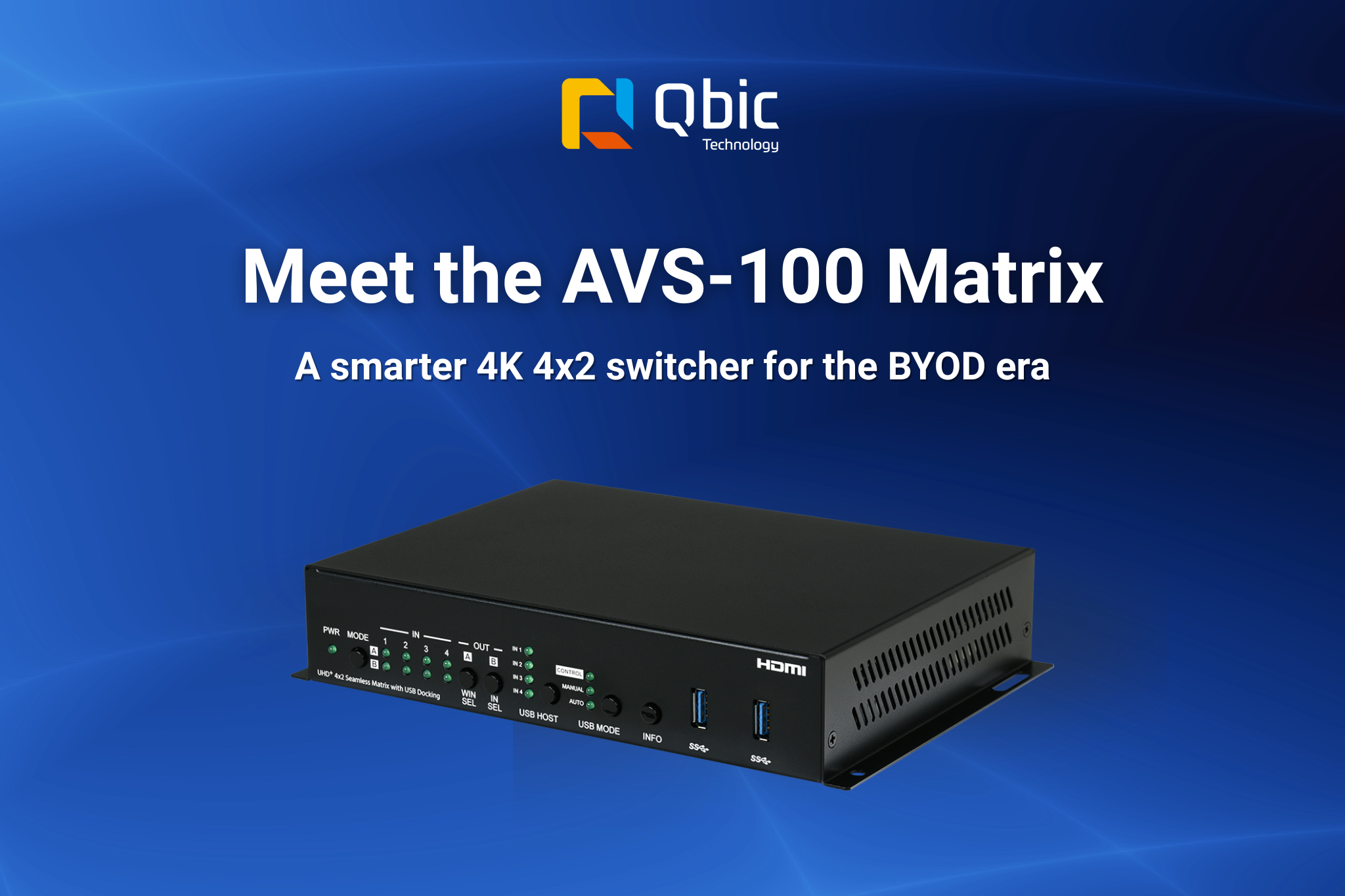The Double-Edged Sword of Multi-Screen Deployments
Digital signage is now at the center of how businesses connect with audiences. From immersive retail walls to dynamic menu boards, screens shape how people experience spaces. Retailers, in particular, are doubling down—68% plan to increase investment in signage.
But more screens often mean more friction. Plans that look sleek on paper can quickly turn into IT headaches, including inconsistent playback, network hiccups, and hardware that ages out too quickly without consistent software support.
It raises a critical question: how do you build a signage system that solves today’s problems without creating tomorrow’s?
What Common Pitfalls Derail Multi-Screen Deployments?
Even as digital signage adoption accelerates, many multi-screen projects fall short of expectations. The problem is rarely the content—it’s almost always the infrastructure behind it.
The most common pitfalls include:
- Hardware sprawl: Relying on one player per screen might seem simple, but it multiplies costs, licenses, and maintenance points as networks scale.
- Technical mismatches: Legacy devices often can’t keep pace with ultra-HD video walls, mixed orientations, or resource-intensive applications, leaving deployments underpowered.
- Environmental constraints: Narrow corridors, lobby entrances, and complex layouts often force awkward screen placements. Without orientation flexibility, IT teams end up juggling multiple orientation-specific models—a costly, inconsistent approach.
- Longevity and security gaps: Perhaps the most damaging issue. Without generational Android OS upgrades and regular patches, deployments become vulnerable to downtime, cyber threats, and premature obsolescence.
These pitfalls don’t just frustrate IT teams. They undermine the very business gains digital signage is meant to deliver, from improving ad recall by 47% to increasing retail sales by 32%.
What is Considered “Future-Proof Signage?”
Yet, the momentum behind digital signage is unmistakable. In 2024, it represented $41.4 billion of global pro AV revenue, and AVIXA forecasts 5.7% annual growth through 2029. With investment climbing, expectations are higher than ever.
Today, future-proof deployments are judged by how well they adapt to shifting demands. The most critical requirements include:
- Cloud-first management: Remote control and centralized updates now define operational efficiency, making it possible to scale seamlessly across dozens or even hundreds of endpoints.
- Continuous OS and security support: Automated patches and generational Android upgrades are mission-critical to guard against vulnerabilities and extend device lifecycles.
- Multi-screen efficiency: Powering multiple displays from a single device reduces hardware, licensing, and maintenance costs, while also simplifying deployment and scaling. This efficiency creates leaner, more reliable networks that are easier to manage over time.
- Orientation flexibility: Supporting both landscape and portrait outputs allows screens to be repurposed as needs evolve. This adaptability maximizes ROI by enabling organizations to reuse existing displays for new campaigns or layouts, without costly refresh cycles.
- AI-ready integration: With content strategies increasingly powered by AI, hardware must integrate smoothly with content management system (CMS) platforms to enable automation, personalization, and real-time adaptation.
- Sustainability by design: Energy efficiency and reduced hardware footprints are no longer optional, as organizations align deployments with ESG and corporate responsibility goals.
These aren’t “nice-to-haves” anymore; they’re the baseline for achieving long-term ROI in digital signage.
How Does BXP-350 Future-Proof Your Digital Signage Strategy?
The Qbic BXP-350 Digital Signage Player was designed to close the gaps that weaken most multi-screen deployments. Instead of introducing more hardware bloat, a single compact unit can power multiple displays—reducing device costs and simplifying operations from day one.
Its advantages extend across key areas:
- Streamlined device management: With ArgusControl (cloud-based) and RCC (intranet-based), IT teams can update, monitor, and scale deployments remotely. This dual approach provides flexibility without compromising security.
Learn more about Qbic’s remote device management tools here. - Built-in peace of mind: Unlike many Android players with short lifecycles, the BXP-350 includes Qbic’s award-winning Fortify+ security solution, generational Android OS upgrades, and regular security patches, ensuring networks remain secure and compliant over years, not months.
- Orientation flexibility: By supporting both landscape and portrait outputs, the BXP-350 allows screens to be repurposed and reused as strategies evolve, protecting investment while enabling adaptable deployments.
- Ecosystem freedom: Backed by Qbic’s global CMS partner ecosystem, the BXP-350 integrates seamlessly with leading platforms, including those advancing AI-driven content automation. This prevents vendor lock-in and keeps infrastructure aligned with future strategies.
Think of the BXP-350 as more than a player; it doesn’t just extend the life of a deployment but also flexible enough to meet new demands. That adaptability comes to life when screens must fit the constraints of real-world spaces.

How Can the BXP-350 Adapt to Any Space?
Physical space is often one of the toughest challenges in multi-screen deployments. Corridors, lobbies, transit hubs, and retail environments can force rigid layouts that limit installation options.
The Qbic BXP-350 overcomes these barriers with flexible multi-screen modes that allow content to be delivered exactly how the environment demands:
- Extended Mode: Spread a single piece of content seamlessly across multiple screens to create immersive video walls for retail flagships, hospitality venues, or demo centers.
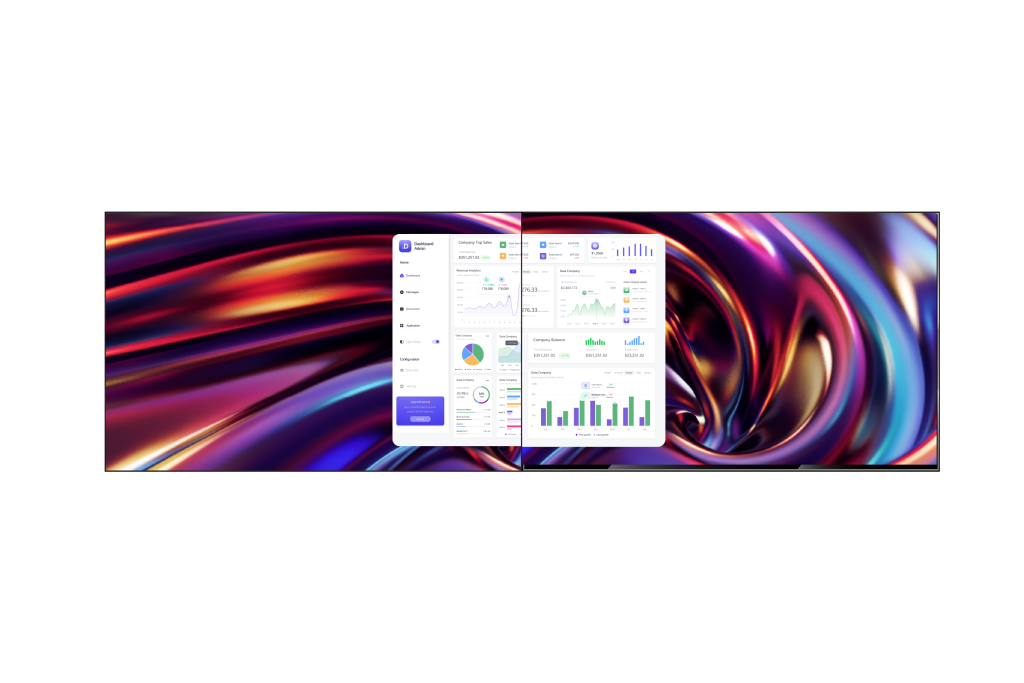
- Independent Mode: Play unique content on each connected display, ideal for menu boards, transportation hubs, or mixed-use spaces with varied audiences.
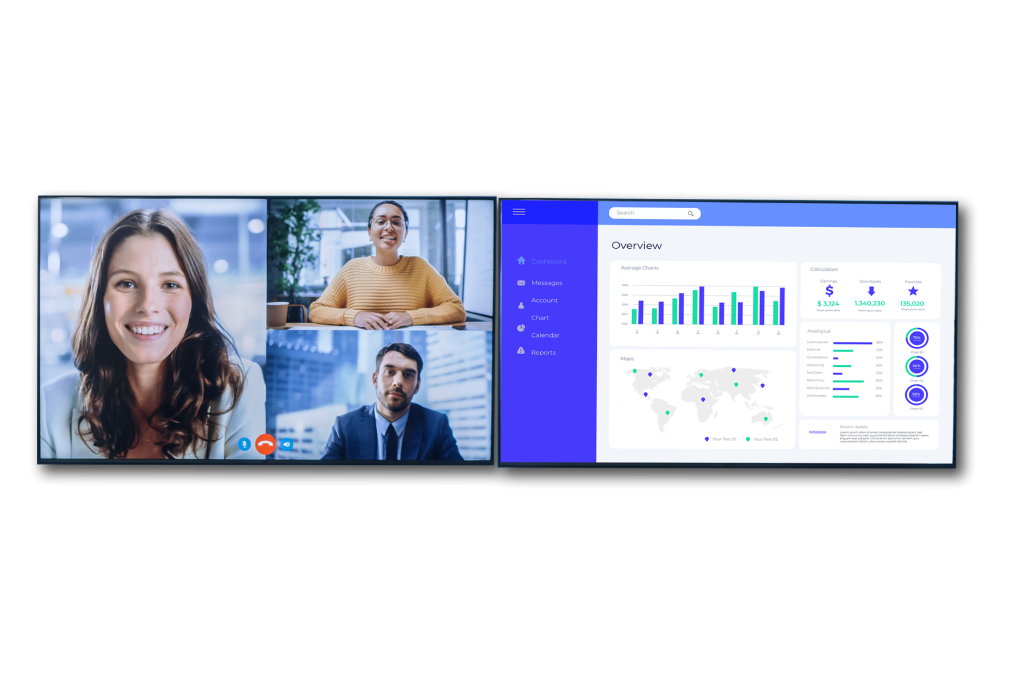
- Clone Mode: Mirror identical content across screens to maintain consistency in event venues, conference centers, or facilities with multiple entrances.

Beyond multi-screen control, the BXP-350 also offers full orientation flexibility.
Displays can run in either landscape and portrait mode, making it possible to deploy screens in narrow corridors, create vertical, informational messaging for transit and retail, or repurpose existing hardware over time. A screen that once served as a horizontal directory can become a vertical poster, or a panoramic wall can transform into a dynamic menu board.
By combining multi-screen versatility with orientation freedom, the BXP-350 ensures digital signage remains flexible, reusable, and aligned with both spatial constraints and evolving business strategies, protecting investment while enabling long-term creativity.
The Right Foundation Unlocks the Real ROI
Digital signage works. It drives higher sales, improves recall, and reduces costs. But the benefits depend on more than the content itself—they depend on whether the infrastructure behind the screens is resilient, secure, and adaptable.
The BXP-350 was designed with these realities in mind. It balances multi-screen efficiency, orientation flexibility with long-term security, cloud scalability, and ecosystem flexibility, ensuring organizations aren’t just avoiding mistakes but actively building signage networks that grow stronger over time.
If your signage network feels fragmented or outdated, the BXP-350 Digital Signage Player provides the foundation to secure, scale, and simplify it, so your team can focus on creating impact, not managing complexity.
If your signage feels fragmented or outdated, it’s time to pivot to infrastructure built for scale, security, and adaptability.
Explore the BXP-350 and Qbic’s complete lineup of digital signage players to find your perfect solution, or get in touch with the Qbic team.

